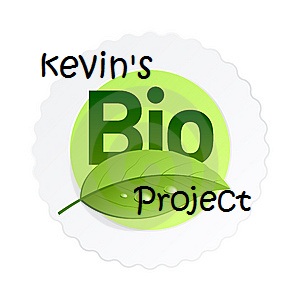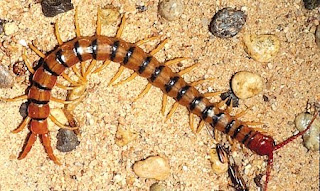Of all the different kingdoms, the animal kingdom is the most diverse in appearance. Some may look similar, and some may look completely different from one another. But what’s an animal? Well, an animal is multicellular, eukaryotic heterotrophs whose cells lack cell walls. There are two different groups of animal who are classified by a very simple principle, which is if either they have backbone or not. Animals that do not have a vertebral column are called invertebrates, and those who have a vertebral column are called vertebrates. These unique organisms need 7 things in order to survive: Feeding, Respiration, Circulation, Excretion, Response, Movement, and Reproduction.
The animal kingdom is a kingdom with many different phyla: Porifera, Cnidaria, Platyhelmintes, Namatoda, Annelida, Molluska, Arthropoda, Echinodermata, and Chordata.
Porifera:
Sponges are asymmetrical organisms, meaning that they have no front or back ends, and no left or right. Sponges are classified as animals because they have all the requirements needed to be a animal: multicellular, heterotrophic, and no cell walls. The bodies of the sponges are formed by a wall around a large cavity in which water is circulated continually. The spores that are located in the body wall enables the water to go through the sponge, which provides a simple mechanism of feeding, respiration, circulation, and excretion. These organisms can either reproduce sexually or asexually; the sperm from a sponge is released into the surrounding water. The water currents carry the sperm t other sponges The sperm enters another sponge through pores and they are carried to the eggs, then the fertilization occurs.

Cnidaria:
Cnidarians are soft-bodied carnivores, and they are characterized by the singing tentacles arranged in a circle around their mouth. There are two basic groups of Cnidarians: Polyp, and Medusa.
A polyp is a cylindrical body with arm-like tentacles. This organism is characterized by their mouth pointing upward. They are normally attached to the base, and as a result they can't move. Unlike polyps, medusas have bell-shaped body with the mouth on the bottom. Although, they belong to different groups, they share many similarities. They both have body walls that surround an internal cavity (gastrovascular cavity).
These organisms can move by many different ways, such as jet propulsion, and muscle contractions. They can also reproduce both sexually and asexually, by budding or by external fertilization in water.

Platyhelmintes:
These organisms are soft and flattened worms, that why they are known as Flatworms. There are three things that characterize Flatworms from any other organisms in the animal kingdom. They have three embryonic germ layers: Endoderm, Mesoderm, and Ectoderm. They also have bilateral symmetry, meaning that only a single imaginary line can divide the body into two equal halves. Another of their characteristics is that they have cephalization, meaning that there’s a concentration of sense organs and nerves on the front anterior, front, side of the body.
Unlike annelids, flatworms don't have coelom formed between their tissues, but they do have enough cephalization to have what’s called a head. These organisms can reproduce by two different ways: by using cilia (swim), or by muscle contractions.
Flatworms can reproduce either sexually or asexually due to the fact that they are hermaphrodites, meaning that they have both male and female reproductive organs. Two worms need to join in a pair, and they deliver sperm to each other. The eggs are laid within a few weeks (Sexual Reproduction). On the other hand, asexual reproduction takes place by fission, in which the organism splits in two, and each half grows new parts to become a complete organism.

Namatoda:
Organisms that are part of the Namatoda kingdom are free-living organisms that inhabit soil, salt flats, aquatic sediments, and water. They might also live as parasites of plants or animals. These organisms are known also as roundworms. Like the flatworms, these organisms develop from three germ layer, but they have a space between the mesoderm and the endoderm (tube within a tube).

Their digestive tract has two openings, one is the mouth where they ingest all the food, and the other one is the anus, where all the feces come out from. The anus is located in the posterior opening of the digestive tract. The inner tube , as you can see in the picture, is the digestive tract, and the outer tube is the body wall. Roundworms move by using their muscles, just like snakes. They reproduce sexually using internal fertilization, which is when the male deposits sperm in the female’s reproductive tract.
Annelida:
These organisms are characterized by their segmented bodies, and from there is where their names come from, Annellus is Greek means segment. Unlike Namatodes, their bodies are divided into two segments by a coelom, and the two segments are often very similar. These organisms with segmented bodies have atrue coelom, which is lined with the mesoderm (one of the three germ layers).
Annelids have to major groups of body muscles that function as part of a hydrostatic skeleton. They use this muscles fro movement, by alternately contracting them. They reproduce sexually, Annelids attach one to another and exchange sperm in order for the fertilization to occur.
Molluska:
Mollusks are soft-bodied animals, and they are very unique because they usually have an internal or external shell. There are many types of mollusks, such as snails, slugs, clams, squids and octopi, but they are often really similar. One of their similarities if that all of them have a free-swimming larva stage called trochophore, before becoming adults. At the larva stage this organisms can be also classified as annelids , so we can clearly see their evolutionary relationship and that they probably evolved from a common ancestor. Another of their similarities is their body plan, they all have five parts: the shell, mantle cavity, foot, gills, digestive tract. They all normally have them but arranged in different ways. Mollusks are able to move in many different ways, like by rippling motion of the foot, or jet propulsion. Many reproduce sexually by external fertilization; they release great amount of eggs and sperm in the water and the fertilization occurs, then the free-swimming larva is created.
Arthropoda:
Like the Annelids, arthropods also have segmented bodies surrounded by a tough external cover called exoskeleton. This external cover made from protein and a carbohydrate called chitin. These organisms vary greatly in color, shapes, size and toughness. They are unique for their jointed appendages. Arthropods move by using a well develop group of muscles, that we can see that is something that has being evolving from each kingdom, that are coordinated by the nervous system. They reproduce by internal fertilization. Terrestrial arthropods have reproductive organs that place sperm inside the female’s body. On the other hand, aquatic arthropods may have inter or external fertilization. External fertilization is when both eggs and sperm are released in the water and they join together.
Echinodermata:
These organism are characterized by their spiny skin and unlike arthropods, they don’t have exoskeleton instead they have an internal skeleton. They are also characterized by a water vascular system, and suction cup-like structures called tube feet. The water vascular system carries out many essential body functions in echinoderms, such as respiration, circulation, and movement. Most adults echinoderms exhibit five-part radial symmetry. Their body parts, which usually occur in multiples of five, are arranged round the central of the body. These organisms normally move by using the tube feets and a thin layer of muscles fibers. Many times they just crawl along the ocean floor by a combined action of the tube feet and the muscles of the body wall. Echinoderms reproduce sexually by external fertilization, which is when the eggs and sperm are released into the water.
Chordata:
Organisms must have four key characteristics to be chordates: Hollow nerve cord, Notochord, Pharyngeal pouches, and a tail that extends beyond the anus.
The dorsal hollow nerve cord is very important in this organisms. It runs along the back part of the body, and nerves brach from this cord at regular intervals.The Notochord is a long supporting rod that runs through the body.Pharyngeal pouches are paired structures in the throat region that are used for gas exchange like gills in fish. All chordates have tails that extends beyond the anus at some of their life. They normally move by alternately contracting paired sets of muscles on either side of the backbone, this creates a series od S-shaped curves that move down the fishes body.The fins help to propel the fish forward.Fishes normally lay down eggs that can either be fertilize externally or internally. Oviparous developthe embryos outside their bodies, but ovoviparous delop the embryo inside the mother’s body.







